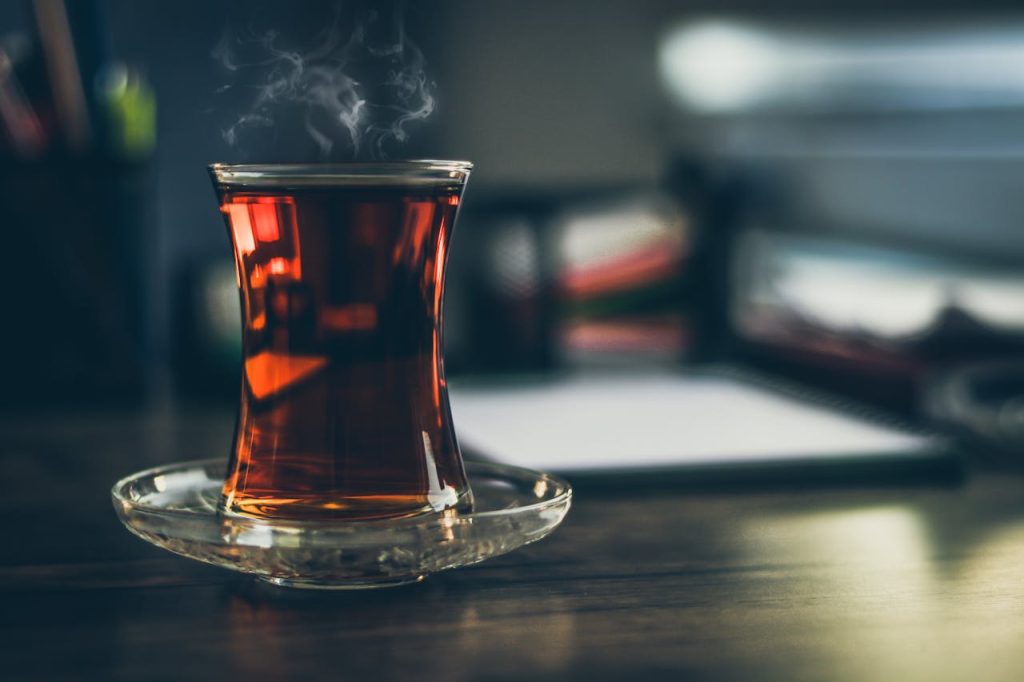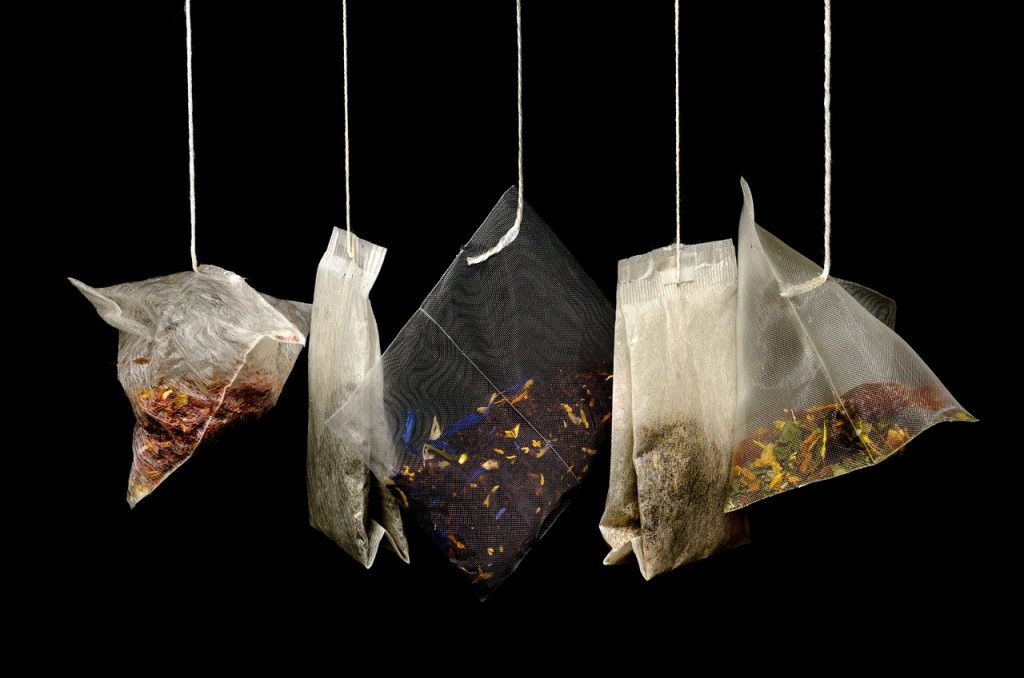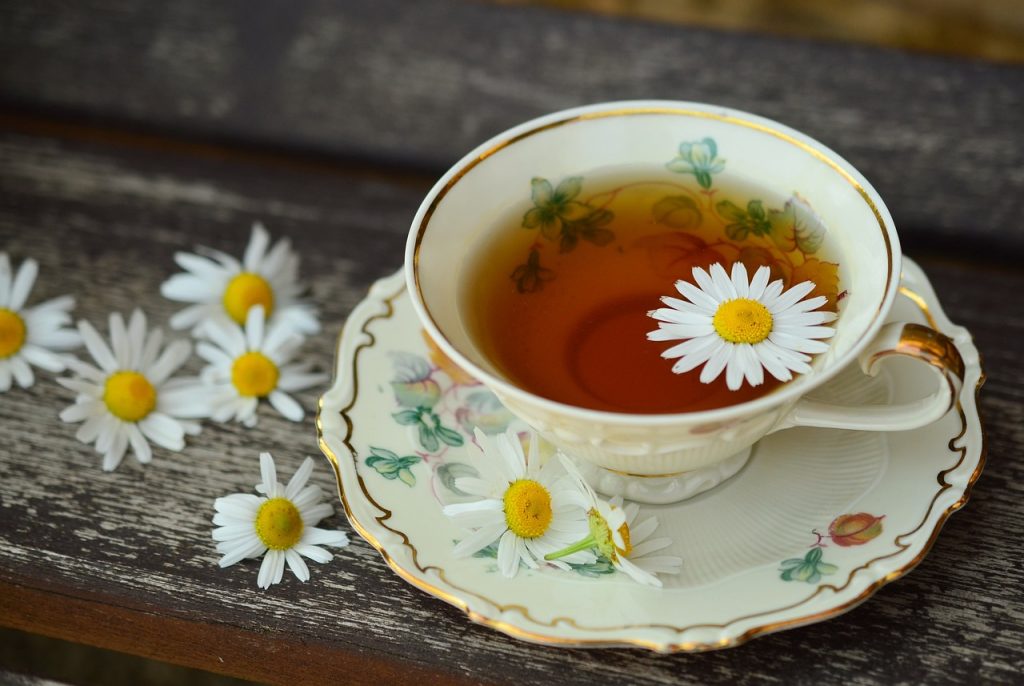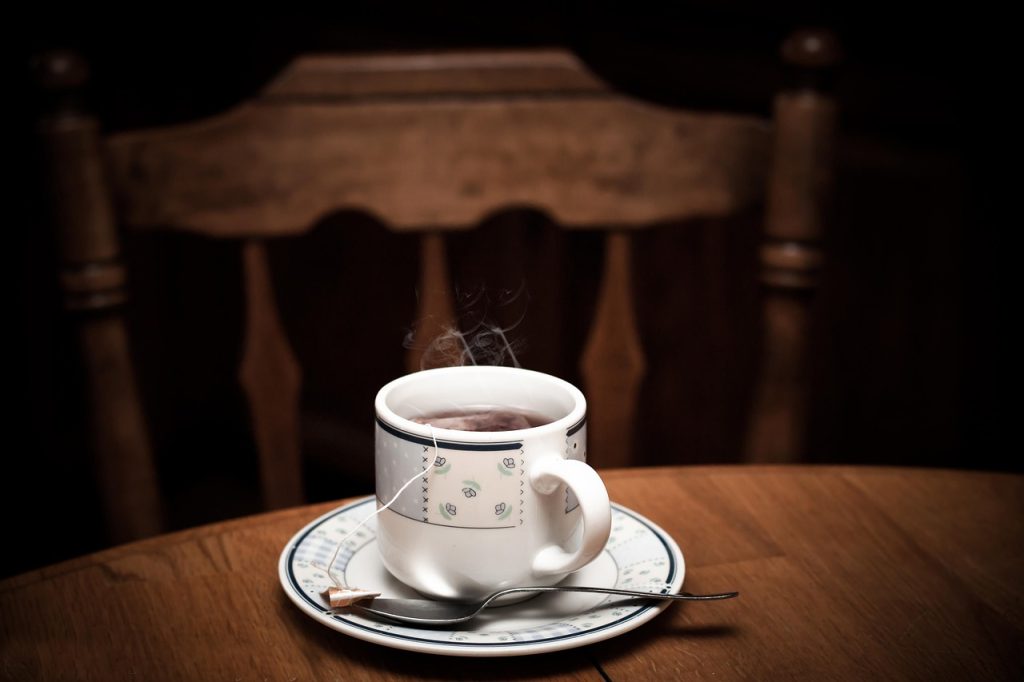Black tea, known for its distinctive aroma, rich flavor, and diverse varieties, has become one of the most beloved teas worldwide. Whether in Chinese tea houses or during British afternoon tea, black tea plays an indispensable role. Its deep historical roots and wide cultural influence make black tea not just a beverage but a cultural symbol. Varieties such as Keemun, Darjeeling, and Assam cater to a wide range of tastes, earning black tea a multitude of loyal enthusiasts globally.
The allure of black tea lies not only in its unique flavors but also in its health benefits. Modern research indicates that black tea is rich in antioxidants, which can help prevent cardiovascular diseases, improve digestion, and boost immunity. Additionally, the moderate caffeine content in black tea provides a gentle energy lift, enhancing productivity at work or during study sessions. Thus, black tea is not only favored in daily life but also chosen by many health enthusiasts as their beverage of choice.
Black Tea Raw Material Harvesting
Black tea, one of the world’s three major tea types, is renowned for its unique fermentation process and robust aroma. To produce high-quality black tea, the selection of raw materials and adherence to harvesting time and standards are crucial. This article will detail suitable tea tree varieties for harvesting, optimal harvest times, and standards, especially highlighting the differences between spring and autumn harvests.
1. Suitable Tea Tree Varieties for Harvesting
The quality of black tea is closely related to the chosen tea tree variety. Different varieties vary in leaf morphology, internal substances, and suitability for processing.
Take Keemun black tea, a famous Chinese variety, for example. The main tea tree varieties used are “Zhuye” and “Qimen”. Both varieties have thick leaves with rich substances, especially high levels of catechins and aromatic compounds, making them suitable for producing highly aromatic black tea.
- Zhuye (竹叶): Large leaves, deep green color, resulting in a bright black tea soup with a strong aroma and refreshing taste.
- Qimen (祁门): Tender buds and leaves with a light green color, producing black tea with an elegant and lasting fragrance known as “Qimen fragrance”.
2. Harvest Time and Standards
The timing and standards of harvesting directly impact the final quality of black tea. Generally, black tea is harvested in two main seasons: spring and autumn, each with its own harvest standards.
Spring and Autumn Harvest Differences
- Spring Tea: Refers to the new shoots of tea trees in spring. During this period, tea leaves grow slowly, accumulate sufficient substances, and are tender with a strong aroma. Spring tea is usually harvested from March to May, with the best quality occurring around Qingming Festival, known as “pre-Qingming tea”.
- Autumn Tea: Harvested in autumn, typically from September to October. Although the growth period of autumn tea is shorter, the mild climate and abundant sunlight lead to rich accumulation of aromatic substances, resulting in a unique fragrance.
Example of Tender Bud Level
Whether harvesting spring or autumn tea, attention should be paid to the tenderness of buds and leaves. Typically, black tea is harvested following the standard of “one bud, two leaves” or “one bud, three leaves”.
- One bud, two leaves: Consists of the top bud and the two leaves below it. This standard ensures moderate tenderness and rich internal substances, suitable for producing high-quality black tea.
- One bud, three leaves: Includes the top bud and the three leaves below it. These leaves are more mature with even richer substances, suitable for producing strong aromatic black tea.
Harvesting should be done gently to avoid damaging buds and leaves, which could affect tea quality. Additionally, harvesting should preferably occur in the early morning or evening to prevent excessive water loss from buds and leaves due to sun exposure.

Withering Process in Tea Leaf Processing
Withering is a crucial initial step in tea leaf processing, aimed at moderately dehydrating fresh leaves to achieve the production of high-quality tea. This article will introduce the purposes and effects of withering, different withering methods, and their respective advantages and disadvantages.
1. Purposes and Effects of Withering
The primary purpose of withering is to reduce the moisture content in tea leaves, facilitating subsequent processing. Specifically, withering serves several important functions:
- Weight Reduction: By withering, tea leaves lose moisture, becoming soft and pliable, which aids in rolling and shaping while reducing energy consumption in subsequent processing.
- Promotion of Chemical Changes: During withering, enzymatic activity increases, promoting the oxidation and transformation of polyphenolic substances, thus generating unique aromas and flavor compounds in tea leaves.
- Enhancement of Aroma: Withering helps reduce grassy notes in fresh leaves, promotes the formation of aromatic compounds, resulting in a more intense and pure tea aroma.
- Improvement of Mouthfeel: Moderate withering reduces bitterness and enhances the freshness and sweetness of tea leaves, thereby improving overall mouthfeel.
2. Methods of Withering
Withering methods primarily include natural withering and indoor temperature-controlled withering, each with its own advantages and disadvantages.
1. Natural Withering
Natural withering utilizes sunlight and air in the natural environment for the withering process.
- Method: Fresh leaves are evenly spread on bamboo trays or withering racks placed in well-ventilated outdoor or indoor areas, allowing tea leaves to gradually lose moisture through natural sunlight and airflow.
- Advantages:
- Low cost: No additional equipment or energy consumption is required.
- Natural flavor retention: Slow withering preserves the natural aroma and taste of tea leaves.
- Disadvantages:
- Susceptible to weather conditions: In rainy or high humidity environments, withering may be ineffective, potentially leading to uneven or excessive fermentation of tea leaves.
- Longer processing time: Natural withering takes a longer time and may not be suitable for large-scale production.
2. Indoor Temperature-Controlled Withering
Indoor temperature-controlled withering involves using specific equipment to control temperature and humidity for the withering process.
- Method: Fresh leaves are evenly spread on withering troughs or racks inside controlled environments, where temperature and humidity are regulated using equipment such as hot air blowers or air conditioning units to accelerate moisture loss in tea leaves.
- Advantages:
- Stable control: Temperature and humidity can be precisely controlled, ensuring consistent withering results regardless of external weather conditions.
- High efficiency: Shorter withering time makes it suitable for large-scale production, improving overall production efficiency.
- Disadvantages:
- Higher cost: Requires investment in equipment purchase and maintenance, with higher energy consumption.
- Potential flavor loss: Improper temperature control may lead to diminished aroma and flavor in tea leaves.
3. Comparison of Different Methods
| Withering Method | Advantages | Disadvantages |
|---|---|---|
| Natural Withering | Low cost, natural flavor retention | Weather-dependent, longer processing time |
| Indoor Temperature-Controlled Withering | Stable control, high efficiency | Higher cost, potential flavor loss |

Rolling in Tea Leaf Processing
Rolling is an essential step in the initial processing of tea leaves, aimed at breaking down cell walls to release internal substances fully, thereby enhancing the aroma and flavor of the tea. This article will introduce the significance of rolling, methods and control of rolling intensity, and how to determine if rolling has achieved the desired effect.
1. Significance of Rolling
Rolling plays several crucial roles in tea leaf processing:
- Cell Wall Destruction: Through rolling, tea leaf cell walls are broken, facilitating the release of polyphenols, amino acids, and other substances, which are essential for subsequent fermentation or fixation processes.
- Formation of Shape: Rolling forms tightly curled strands of tea leaves, enhancing the aesthetic appearance and reducing volume for easier storage and transportation.
- Enhancement of Aroma and Flavor: Rolling promotes even distribution and fusion of internal substances within tea leaves, resulting in a richer aroma and more complex flavor.
- Facilitates Brewing: Rolled tea leaves release their substances more readily during brewing, producing a flavorful and vibrant tea liquor.
2. Methods and Control of Rolling Intensity
Rolling methods primarily include hand-rolling and mechanical rolling, each affecting tea quality differently based on the intensity of the process.
1. Hand-Rolling
Hand-rolling is a traditional method relying on the skill and experience of tea artisans.
- Method: Tea leaves are placed on rolling mats where they are repeatedly rolled and pressed using palms or fists, gradually applying pressure to break cell walls and form tight curls.
- Advantages:
- Flexibility: Hand-rolling allows adjustments in pressure and time based on the specific condition of tea leaves.
- Excellent Texture: Hand-rolled tea leaves form tightly curled strands, resulting in an aesthetically pleasing appearance.
- Disadvantages:
- Low Efficiency: Hand-rolling is time-consuming and labor-intensive, not suitable for large-scale production.
- Skill Dependence: The quality of hand-rolling depends heavily on the skill and experience of artisans, leading to potential inconsistencies.
2. Mechanical Rolling
Mechanical rolling employs specialized rolling machines for a more modern approach to rolling tea leaves.
- Method: Tea leaves are placed in rolling machines where they undergo pressure from rotating drums or plates, breaking cell walls and forming curls.
- Advantages:
- High Efficiency: Mechanical rolling is fast and suitable for large-scale production.
- Consistency: Rolling effects are uniform and stable, ensuring consistent tea quality.
- Disadvantages:
- Less Flexibility: Adjusting rolling intensity and time is more challenging, potentially leading to uneven rolling or leaf breakage.
- Appearance: Mechanical rolling may produce less tightly curled strands compared to hand-rolling, affecting tea appearance slightly.
3. Control of Rolling Intensity
Whether hand-rolled or mechanically rolled, the intensity of rolling must be carefully controlled. Over-rolling can lead to leaf breakage and compromised quality, while under-rolling may result in insufficient curling and incomplete substance release. The following aspects are typically used to judge the effectiveness of rolling:
- Curling Tightness: Tea leaves should be tightly curled with a uniform appearance, free from obvious breakage or leaf fragments.
- Exudation of Tea Juice: After rolling, there should be visible tea juice on the surface of tea leaves, indicating thorough substance release.
- Texture: Rolled tea leaves should be soft, resilient, and not easily broken.
- Color Change: Tea leaves should exhibit a gradual darkening during rolling, indicating cell wall rupture and substance release.
3. Assessing the Effectiveness of Rolling
To determine if rolling has achieved the desired effect, observe the following:
- Appearance: Rolled tea leaves should form tight curls with uniform shape and color, without significant breakage or fragments.
- Texture: Rolled tea leaves should feel soft and resilient, with noticeable exudation of tea juice when gently squeezed.
- Aroma: Rolled tea leaves should emit a rich aroma without any off-smells.
- Color: Rolled tea leaves should have an even coloration, indicating successful substance release.
By carefully controlling the rolling process and observing these indicators, tea producers can ensure that the tea leaves achieve optimal aroma, flavor, and appearance.

Fermentation in Tea Processing
Fermentation is a critical step in tea processing that significantly impacts the aroma, flavor, and color of tea. This article will detail the environmental requirements for fermentation, the chemical changes that occur during fermentation, particularly the oxidation of tea polyphenols, and the formation of aroma components in tea leaves.
1. Environmental Requirements for Fermentation
The fermentation process involves enzymatic oxidation that transforms chemical components in tea leaves into specific aroma and flavor substances. To ensure smooth fermentation, specific environmental conditions are required:
- Temperature: The optimal temperature for fermentation generally ranges from 25°C to 30°C. High temperatures accelerate oxidation excessively, leading to a decline in quality, while low temperatures slow down fermentation, affecting the formation of tea flavors.
- Humidity: The ideal air humidity should be between 85% and 95%. Higher humidity helps maintain the softness of tea leaves, promotes enzyme activity, and enhances fermentation effects. Low humidity causes tea leaves to lose water too quickly, resulting in uneven fermentation.
- Ventilation: Adequate ventilation ensures sufficient oxygen supply, promoting the oxidation of tea polyphenols. However, excessive ventilation may cause rapid moisture evaporation, affecting fermentation quality.
- Cleanliness: The fermentation room should be kept clean to avoid contamination of tea leaves by impurities or odors. Regular disinfection and cleaning of equipment are necessary to prevent microbial growth.
2. Chemical Changes During Fermentation
During fermentation, a series of complex chemical changes occur within tea leaves, primarily involving the oxidation of tea polyphenols and the formation of aroma components:
1. Oxidation of Tea Polyphenols
Tea polyphenols are major chemical components in tea leaves, including catechins, flavonoids, and anthocyanins. During fermentation, these polyphenols undergo oxidation catalyzed by polyphenol oxidase (PPO), resulting in the formation of theaflavins (TF) and thearubigins (TR).
- Oxidation of Catechins: Catechins oxidize to form theaflavins (TF) and thearubigins (TR). Theaflavins contribute to the astringency and freshness of tea, while thearubigins impart red color and a thick, robust flavor to the tea.
- Enzymatic Reaction: Polyphenol oxidase (PPO) is the main enzyme responsible for the oxidation of tea polyphenols. Under suitable temperature and humidity conditions, enhanced PPO activity accelerates the oxidation of tea polyphenols, resulting in the unique color and flavor characteristics of black tea.
2. Formation of Aroma Components in Tea Leaves
During fermentation, significant changes occur in the aroma components of tea leaves, leading to the distinctive aromas found in fermented teas such as black tea and oolong tea:
- Formation of Aromatic Substances: During fermentation, fatty acids, amino acids, and sugars in tea leaves undergo enzymatic breakdown, producing a variety of aromatic substances such as terpenes, alcohols, aldehydes, and esters. These aromatic compounds contribute to the rich floral, fruity, and honey-like aromas of fermented teas.
- Disappearance of Grassy Notes: The grassy notes present in fresh tea leaves gradually diminish during fermentation, replaced by a mellow tea aroma. This change is due to the oxidation or transformation of low molecular weight alcohols and aldehydes into more complex aromatic substances.
By understanding and carefully managing the fermentation process, tea producers can control the oxidation of tea polyphenols and the formation of aroma components, ensuring the development of desirable aroma, flavor, and color in the final tea product.
Drying in Tea Processing
Drying is the final critical step in tea processing, aimed at removing moisture from tea leaves to achieve suitable moisture content. This process enhances the tea’s shelf life and stabilizes its quality. This article will delve into the purposes of drying, methods and equipment used, with a focus on machine drying and charcoal roasting.
1. Purposes of Drying
The role of drying in tea processing is multifaceted:
- Moisture Reduction: Drying reduces the moisture content of tea leaves to around 5%, preventing mold and microbial growth, thereby extending the tea’s shelf life.
- Quality Stabilization: Drying halts enzymatic reactions like fermentation, fixing the color, aroma, and flavor of the tea, ensuring consistency and stability.
- Improving Appearance: Drying results in tightly rolled tea leaves with a bright appearance, enhancing the visual quality of the tea.
- Facilitating Packaging and Transport: Reduced volume and weight of dried tea leaves facilitate easier packaging, transportation, and storage, minimizing storage space.
2. Methods and Equipment for Drying
Drying methods primarily include machine drying and charcoal roasting, each with distinct characteristics and applications:
1. Machine Drying
Machine drying is a widely used modern method in tea processing, employing mechanical devices to control temperature and airflow for drying tea leaves.
- Equipment: Main equipment includes continuous dryers and cabinet dryers. Continuous dryers are suitable for large-scale production, where tea leaves pass through high-temperature zones on a conveyor belt. Cabinet dryers are used for smaller batches, with tea leaves dried inside enclosed boxes.
- Method: Tea leaves are evenly spread on conveyor belts or trays in the dryer. Appropriate temperature and airflow settings ensure uniform heating, facilitating rapid drying.
- Advantages:
- High Efficiency: Rapid drying speeds are suitable for large-scale production.
- Precise Control: Temperature and time settings can be accurately controlled to ensure consistent drying quality and stability.
- Energy Efficiency: Modern dryer equipment is energy-efficient, meeting environmental standards.
- Disadvantages:
- High Equipment Costs: Purchasing and maintaining drying equipment can be costly.
- Flavor Differences: Traditional flavors of some teas may be altered during rapid high-temperature drying.
2. Charcoal Roasting
Charcoal roasting is a traditional drying method that utilizes charcoal fire for drying tea leaves.
- Equipment: The main equipment used is charcoal roasting stoves. Tea leaves are dried on trays or in baskets over charcoal fires, which provide even heat distribution.
- Method: Tea leaves are spread evenly on trays or in baskets and dried using radiant and convective heat from charcoal fires. During roasting, tea leaves are constantly turned to ensure even heating.
- Advantages:
- Unique Flavor: Charcoal roasting imparts a unique aroma and taste appreciated by traditional tea enthusiasts.
- Low Cost: Equipment is simple, with lower operational costs, making it suitable for small-scale production.
- Disadvantages:
- Low Efficiency: Drying time is longer, making it unsuitable for large-scale production.
- Control Challenges: Temperature and fire control are difficult to regulate precisely, heavily relying on the experience and skill of operators.
By understanding these drying methods and their respective advantages and disadvantages, tea producers can choose the most appropriate method to achieve desired quality and characteristics in their final tea products.

Refinement and Grading
In the processing of tea leaves, refinement and grading are crucial steps to ensure the quality and competitiveness of tea in the market. This article will detail the steps and effects of tea leaf refinement, as well as the standards and criteria for tea grading.
1. Steps and Effects of Refinement
Refinement is the final stage of tea processing, where a series of steps are employed to enhance the appearance, aroma, and taste of tea, meeting the quality standards for commercial tea. The main steps of refinement include sorting, winnowing, sieving, blending, and firing.
- Sorting:
Process: Manual or mechanical removal of impurities, old leaves, stems, and fragments from the tea leaves.
Effect: Improves purity and uniformity of tea leaves, ensuring the visual quality of commercial tea. - Winnowing:
Process: Use of air currents to blow away lightweight impurities and fine particles from the tea leaves.
Effect: Further purifies tea leaves, reduces foreign matter content, and enhances quality. - Sieving:
Process: Classifying tea leaves by size and thickness using screens of different aperture sizes.
Effect: Ensures uniformity of tea leaf particles, improving appearance and consistency during brewing. - Blending:
Process: Mixing tea leaves from different batches or varieties in proportions according to their characteristics and market demand.
Effect: Balances aroma, flavor, and color of tea leaves, ensures consistency across batches, and meets diverse market demands. - Firing:
Process: Secondary drying of tea leaves to further reduce moisture content and stabilize quality.
Effect: Enhances tea aroma, increases shelf life, and prevents deterioration.
Through these refinement steps, tea leaves undergo significant improvements in appearance, aroma, and taste, resulting in high-quality commercial tea.
2. Standards and Criteria for Grading
Tea grading involves categorizing tea based on its quality characteristics for market sales and pricing. Grading standards and criteria mainly include appearance, aroma, taste, and liquor color.
- Appearance:
Standard: Shape, size, color, and tightness of tea leaves.
Criteria: Higher grades have tightly rolled, uniform leaves with bright color; lower grades have loosely rolled leaves with dull color. - Aroma:
Standard: Type and intensity of tea aroma.
Criteria: Higher grades have fresh, pronounced, and persistent aroma; lower grades have subdued, fleeting, or off-notes. - Taste:
Standard: Taste profile of the tea liquor, including freshness, richness, aftertaste, and astringency.
Criteria: Higher grades have refreshing, rich, pronounced aftertaste with minimal astringency; lower grades have flat, weak taste with pronounced astringency. - Liquor Color:
Standard: Color and clarity of the brewed tea liquor.
Criteria: Higher grades have bright, clear liquor; lower grades have dull, cloudy liquor.
Specific application of grading standards varies with different tea varieties and processing methods. For example, green tea emphasizes leaf integrity and color, while black tea focuses on aroma and liquor color.

Storage and Packaging
Storage and packaging are crucial stages in the journey of tea from production to consumption, directly impacting its quality and shelf life. This article will provide a detailed overview of suitable storage conditions for tea and the selection of packaging materials to ensure tea retains its optimal quality during storage.
1. Suitable Storage Conditions
The storage conditions of tea are vital for maintaining its quality; improper conditions can lead to loss of aroma, deterioration, or moisture absorption. Below are the recommended storage conditions for tea:
- Temperature:
Cool Temperature: Tea should be stored in a cool environment, ideally between 0°C to 5°C. Lower temperatures slow down the oxidation of tea constituents, extending its shelf life.
Constant Temperature: Fluctuating temperatures accelerate tea oxidation and deterioration, so maintaining a stable storage environment is crucial. - Humidity:
Dry Environment: Tea is sensitive to humidity; therefore, relative humidity should be kept below 50% to prevent tea from absorbing moisture and molding.
Moisture Barrier: Measures such as using desiccants or moisture-resistant packaging materials should be taken to protect tea from external humidity. - Light:
Avoid Light: Particularly, ultraviolet (UV) light accelerates the degradation of chlorophyll and aromatic components in tea, leading to color change and loss of aroma. Tea should be stored in a dark or dimly lit environment.
Opaque Packaging: Choose opaque packaging materials such as aluminum foil bags or tin cans to effectively shield tea from light. - Air:
Seal: Tea readily absorbs moisture and oxidizes when exposed to air. Therefore, tea should be stored in tightly sealed containers to minimize air exposure.
Nitrogen Flushing: For premium teas, nitrogen flushing replaces the air inside packaging with inert gas to prevent oxidation and deterioration. - Odors:
Odor Isolation: Tea has a strong affinity for absorbing surrounding odors. Thus, the storage environment should be clean, odor-free, and away from chemicals, spices, and strongly scented foods.
2. Selection of Packaging Materials
Appropriate packaging materials play a crucial role in preserving the quality and extending the shelf life of tea. When selecting packaging materials, factors such as moisture resistance, oxygen barrier, light protection, and odor isolation should be considered. Below are commonly used packaging materials and their characteristics:
- Aluminum Foil Bags:
Characteristics: Aluminum foil bags provide excellent moisture, oxygen, and light barrier properties. They are lightweight, offer good sealability, and are an ideal choice for storing tea.
Application: Suitable for packaging various types of tea, especially premium teas. - Plastic Composite Bags:
Characteristics: Plastic composite bags are made of multiple layers with good barrier properties against moisture and oxygen. Common materials include PET, PE, NY, etc.
Application: Suitable for packaging medium to lower grade teas, offering cost-effective solutions. - Tin Cans:
Characteristics: Tin cans offer good moisture, oxygen, and light resistance. They are aesthetically pleasing, reusable, and provide excellent long-term storage options.
Application: Ideal for packaging high-grade teas and gift teas. - Paper Cans:
Characteristics: Environmentally friendly and lightweight, paper cans can be lined with aluminum foil or plastic films to enhance barrier properties. They are cost-effective and suitable for large-scale production.
Application: Suitable for packaging medium-grade teas. - Vacuum Packaging:
Characteristics: Vacuum packaging removes air from the package to prevent tea oxidation and moisture absorption. Vacuum packaging bags are typically made of aluminum foil or plastic composite materials.
Application: Suitable for highly sensitive teas like premium green tea and black tea.
Choosing the right packaging material ensures tea retains its freshness and quality, meeting consumer expectations for taste and aroma.
